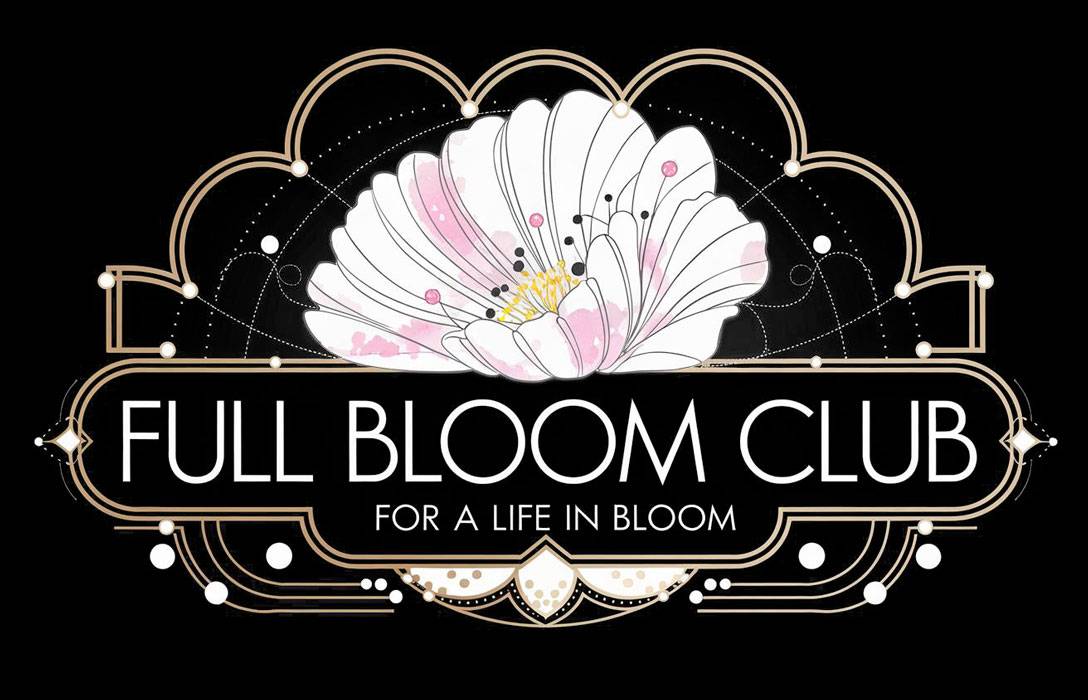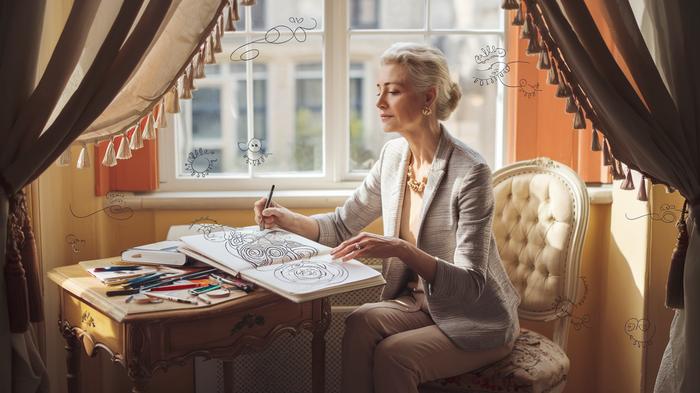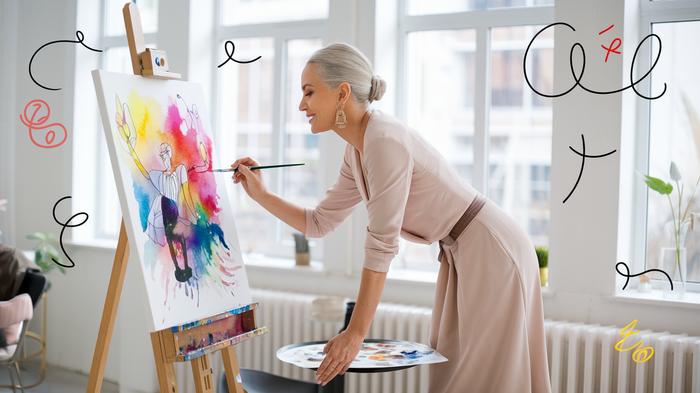Mastering the Basics of Line Art: Essential Tips for Beginners & 247 Trendy Line Art Ideas
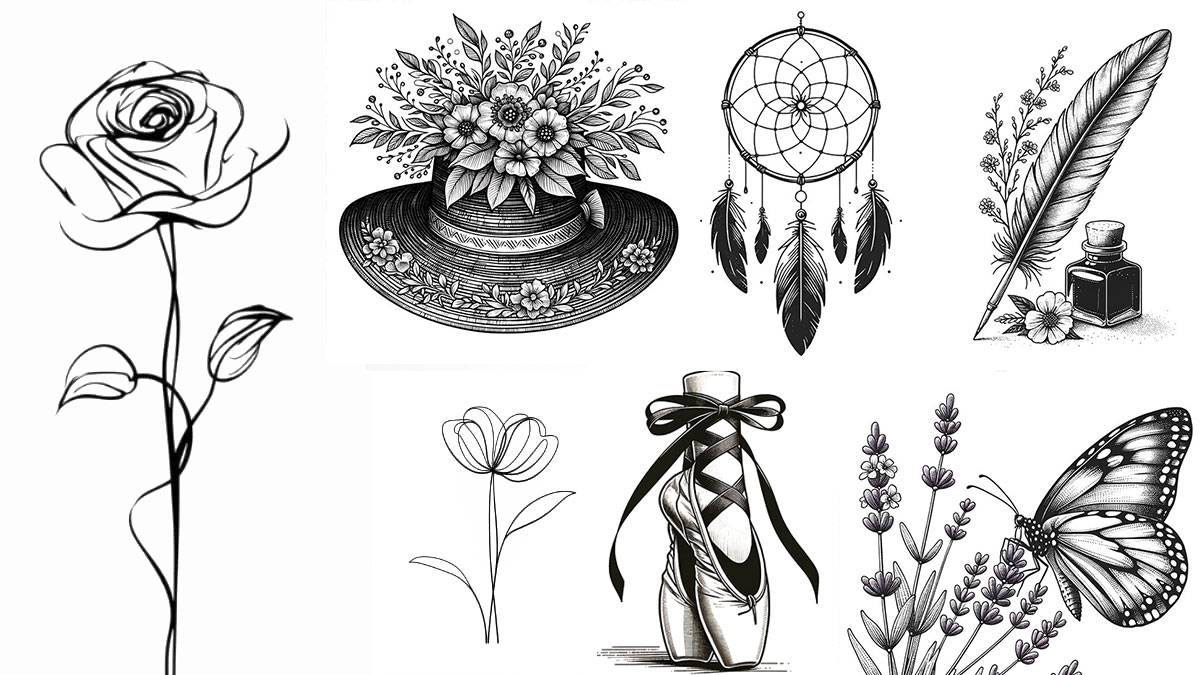
Are you a Line Art beginner artist fascinated by the captivating world of line art? Look no further! In this comprehensive guide, we will explore the fundamentals of line art and provide you with valuable tips and techniques to kickstart your artistic Line Art journey. Whether you’re a traditional artist or prefer digital mediums, these insights will help you develop your skills and create stunning line art masterpieces.
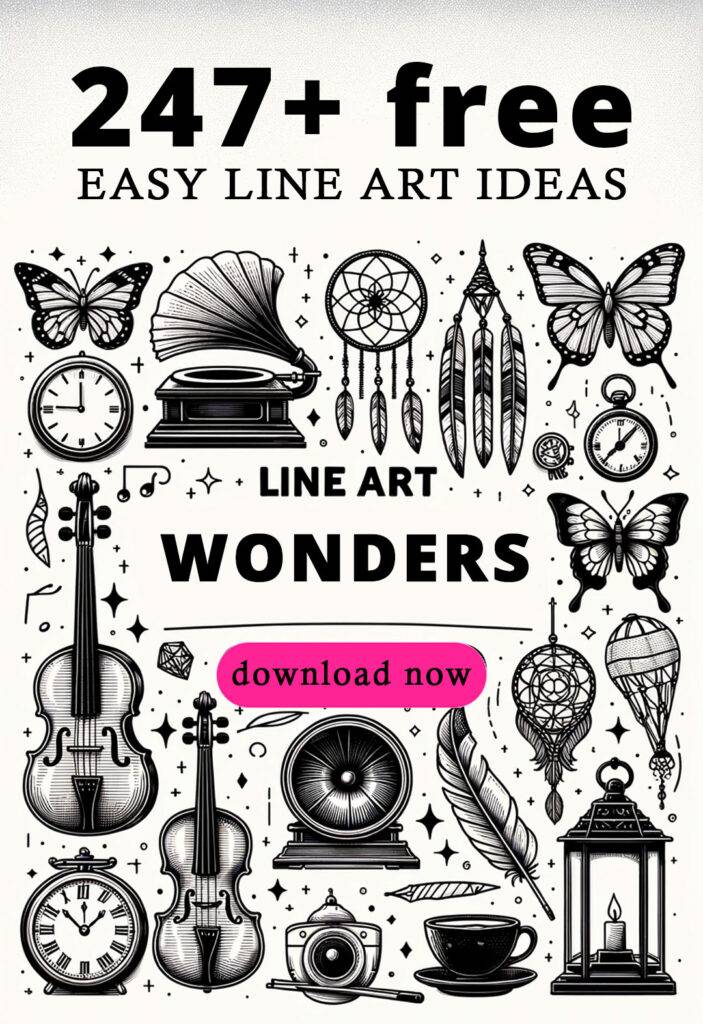
Embrace Basic Tools and Materials for Line Art
To embark on your line art journey, it is essential to gather the basic tools and materials. Quality pencils, pens, or digital drawing tablets are the foundation of your artwork. Additionally, investing in smooth paper or a digital canvas will ensure a seamless drawing experience.
Experiment with different types of pencils to find the ones that suit your style. Artists often prefer mechanical pencils with varying lead thickness or wooden pencils for their versatility. Pens with different nib sizes provide a range of line widths to explore in your artwork.
For digital artists, a drawing tablet and stylus offer precision and flexibility. There are various options available, ranging from budget-friendly tablets to professional-grade ones with advanced features.

To begin your journey, it’s essential to have the right tools and materials. Here are some basic supplies you’ll need:
- Paper: Choose a smooth, high-quality paper suitable for line work.
- Pencils: Opt for a range of graphite pencils to achieve different line weights.
- Pens: Experiment with various pens, such as fine liners or technical pens.
- Erasers: Keep both a kneaded eraser and a fine eraser handy for corrections.
- Ruler: Use a ruler to create precise and straight lines.
- Optional: Colored pencils or markers for adding color to your line art.
Understanding Line Weight and Pressure in Line Art

Line weight and pressure play a crucial role in line art. By varying the pressure applied to your pen or pencil, you can create lines of different thicknesses. This technique adds depth and visual interest to your artwork. Experiment with light and heavy strokes to understand the impact of line weight on your drawings.
In line art, line weight and pressure play a crucial role in creating depth and dimension. Line weight refers to the thickness or thinness of a line. By varying the pressure applied to your drawing tool, you can achieve thin, delicate lines or bold, expressive strokes.

Experiment with different drawing tools and their responsiveness to pressure. Practice controlling your hand movements to create consistent line weights. The ability to control line weight will allow you to add emphasis, create shading, and define the form of your subjects.
Take inspiration from artists who excel in using line weight effectively. Analyze their artworks and observe how they manipulate line thickness to convey different textures, lighting conditions, or emotional impact.

Download 100 Step-by-Step Worksheets for Most Trending Drawing Ideas
Mastering Line Variations and Styles
Line art offers endless possibilities for exploring various line variations and styles. Try experimenting with different types of lines, such as straight lines, curved lines, and hatching. Discover your own unique style by playing with line density, spacing, and direction.

Line art offers a vast range of possibilities for creating visually appealing artworks. Understanding different line variations and styles will enhance your artistic expression and provide you with more tools to convey your ideas effectively.

Straight Lines:
Straight lines are the most basic and commonly used element in line art. They can be precise, clean, and add structure to your artwork. Experiment with using straight lines to outline shapes, create geometric patterns, or define the edges of objects.
Curved Lines:
Curved lines bring fluidity and dynamism to your artwork. They can suggest movement, organic forms, or add a sense of grace. Practice drawing smooth and continuous curved lines, exploring different arcs and curves to create various shapes and contours.
Download 100 Step-by-Step Worksheets for Most Trending Drawing IdeasDashes and Dots in Line Art:

Dashes and dots are versatile line variations that can add texture, pattern, or create visual interest in your artwork. Experiment with different arrangements and densities of dashes and dots to create unique effects. They can be used to indicate shading, create stippling, or even simulate textures like grass or fur.
Hatching and Cross-Hatching in Line Art:
Hatching and cross-hatching techniques involve drawing parallel lines or crisscrossing lines to create value and texture. These techniques are commonly used in traditional line art to suggest shading, volume, or texture.

Stippling in Line Art:
Stippling is a technique where small dots or marks are used to create value and texture. By varying the density and size of the dots, you can achieve different shades and tones. Stippling requires patience and precision but can result in intricate and visually captivating artwork.
Creating Patterns with Lines:
Lines can be used to create patterns and intricate designs in line art. By repeating and manipulating lines in specific arrangements, you can achieve visually striking patterns. This technique adds complexity and visual interest to your artwork.
Explore different line variations and styles, and combine them to create your unique artistic language. The more you practice and experiment, the more comfortable you will become in utilizing these techniques to bring your artistic vision to life.
Exploring Composition and Proportion

Creating visually appealing line art requires an understanding of composition and proportion. Consider the placement and arrangement of elements within your artwork. Use basic principles like the rule of thirds and the golden ratio to achieve balanced compositions. Pay attention to the proportions of objects to maintain realism and harmony.
Composition and proportion are essential elements in any artwork, including line art. They determine the placement of your subjects, the overall balance of the artwork, and the visual impact it creates.

Composition:
Composition refers to the arrangement of elements within your artwork. Consider the placement of your subjects, the negative space, and the overall visual balance. Experiment with different compositions to create visual interest and guide the viewer’s eye.
One common approach is the rule of thirds, where you divide your artwork into a grid of nine equal parts and place your subjects along the lines or intersections. This technique adds balance and creates a visually pleasing composition.
Another approach is to create a focal point, where you emphasize a particular area or subject in your artwork. This can be achieved by using thicker lines, higher contrast, or by placing the focal point off-center.

Proportion:
Proportion refers to the relative size and scale of objects within your artwork. It is essential to maintain accurate proportions to create realistic and visually appealing drawings. Observing and practicing proportion will help you develop an eye for capturing the right relationships between objects.
Start by observing the proportions of objects in real life or reference photos. Pay attention to the size relationships between different parts of the same object or between multiple objects. Practice sketching basic shapes and objects, gradually adding more complexity as you gain confidence.
Remember, proportion is not limited to the size of objects but also includes the spacing between them. Proper spacing and alignment can greatly enhance the overall visual impact of your line art.
If you’re looking to improve your skills in this area, I highly recommend checking out other related articles to strengthen your Line art skills.
Adding Depth and Dimension with Shading Techniques
Shading techniques are essential to give your line art depth and dimension. Explore various shading methods like cross-hatching, stippling, and contour shading. Practice incorporating light and shadow to create realistic forms and add a three-dimensional feel to your artwork.
Shading techniques are vital for adding depth and dimension to your line art. By incorporating shading, you can create the illusion of three-dimensional forms and make your artwork more realistic and visually engaging.
Download 100 Step-by-Step Worksheets for Most Trending Drawing IdeasContour Shading:
Contour shading involves using parallel lines or hatching to follow the contours and shapes of the subjects. This technique helps define the form and volume of the objects. Study the way light interacts with different forms and experiment with shading techniques to capture the subtle variations in light and shadow.
Cross-Hatching:

Cross-hatching is a shading technique that involves layering intersecting lines at different angles. By varying the density and direction of the lines, you can create areas of light and shadow. Cross-hatching adds depth and texture to your line art.
Stippling:
Stippling, as mentioned earlier, can also be used for shading. By varying the density and size of the dots, you can create areas of light and shadow. Stippling requires patience and precision, but it can result in intricate and visually captivating shading effects.
Experiment with different shading techniques and find the ones that work best for your style and desired visual impact. Remember to consider the direction and intensity of light sources within your artwork to create realistic shading.
Download 100 Step-by-Step Worksheets for Most Trending Drawing IdeasIncorporating Texture and Patterns

Texture and patterns can bring life and character to your line art. From wood grain to fabric folds, let your imagination run wild as you explore the possibilities of adding texture and patterns to your artwork.
As you gain proficiency in the fundamentals of line art, it’s important to develop your own personal style. Personal style distinguishes your artwork and makes it unique to you as an artist. It reflects your individuality, creative vision, and the emotions you want to convey through your art.
Don’t be afraid to experiment, take risks, and push the boundaries of your comfort zone. Explore different subject matters, techniques, and artistic influences. Take inspiration from various art movements, artists, and even non-artistic sources.
Consider creating a sketchbook or a digital portfolio where you can document your artistic journey and track your progress.
Remember, developing a personal style takes time and continuous exploration. Embrace the process and let your unique artistic voice shine through your line art.
Creating Emotion and Mood through Lines
Lines have the power to evoke emotions and set the mood in your artwork. Play with the intensity, flow, and direction of lines to convey different feelings. Use lines intentionally to tell a story and evoke an emotional response from your audience.

Lines have the power to evoke emotions and set the mood in your line art. By manipulating the characteristics of lines, you can convey different feelings and create a more impactful artwork. Here are some techniques to create emotion and mood through lines:
- Line Weight: Varying the thickness and thinness of lines can add depth and dimension to your artwork. Thick and bold lines can convey strength, while delicate and thin lines can evoke a sense of fragility or lightness.
- Line Direction: The direction of lines can influence the mood of your artwork. Diagonal lines can create a sense of movement or dynamism, while vertical lines can convey stability or strength. Horizontal lines can evoke calmness or tranquility.
- Line Quality: Pay attention to the quality of your lines. Clean and precise lines can create a sense of order and control, while rough and sketchy lines can add energy and spontaneity. Experiment with different line styles, such as hatching, cross-hatching, or stippling, to enhance the desired mood.
- Line Curvature: Curved lines can introduce a sense of fluidity, grace, and organic movement to your artwork. They can evoke feelings of elegance, rhythm, or softness. Straight lines, on the other hand, can create a sense of structure, stability, or rigidity.
Consider the emotions and mood you want to convey in your line art and experiment with different line techniques to achieve the desired effect. Keep in mind that the combination of various line characteristics can further enhance the emotional impact of your artwork.
Utilizing Negative Space
Negative space refers to the empty or unmarked areas surrounding the main subject in your artwork. It can be as important as the lines themselves. By using negative space strategically, you can enhance the visual impact and focus of your line art. Experiment with incorporating negative space to create balance, emphasize your subject, or add an element of mystery.
Enhancing Your Line Art with Color

While line art traditionally relies on black and white, adding color can take your artwork to the next level. Explore different coloring techniques, such as watercolor, markers, or digital coloring. Use color strategically to highlight specific elements, create depth, and evoke certain moods in your line art.
- Color Harmony: Choose a color palette that complements the mood and subject of your line art. Consider the emotions and atmosphere you want to convey. Harmonious colors that work well together can create a visually pleasing and cohesive artwork.
- Selective Colorization: Instead of coloring every part of your line art, consider selectively adding color to specific elements. This technique can draw attention to certain areas or create focal points within the artwork. It can also emphasize the contrast between the colored and non-colored areas, adding visual interest.
- Color Techniques: Experiment with different color application techniques to enhance your line art. You can use solid blocks of color, gradients, or even textured brushes to add depth and dimension. Play with opacity and blending modes to achieve the desired effects.
- Light and Shadow: Color can be used to represent light and shadow in your line art. Consider how lighting conditions affect the colors of your subject. Use warmer tones for areas hit by direct light and cooler tones for areas in shadow. This adds realism and depth to your artwork.
Showcasing Your Line Art: Digital and Traditional Approaches

Once you’ve created your line art masterpiece, it’s time to showcase it to the world. Here are different approaches for displaying your artwork:
Digital Line Art Techniques and Tools
- Use graphic design software or drawing tablets to create digital line art.
- Experiment with different brushes and digital effects to enhance your artwork.
- Share your creations on social media platforms or online art communities.
Traditional Line Art: Pencils, Pens, and Inks
- Frame your traditional line art pieces to display them as physical artwork.
- Participate in art exhibitions or local art shows to showcase your talent.
- Connect with fellow artists and art enthusiasts to gain exposure.
Scanning and Digitizing Your Traditional Line Art
- Scan your traditional line art to create digital copies for online sharing or printing.
- Use photo editing software to clean up and enhance the scanned images.
- Save your digital files in a high-resolution format for quality reproduction.
Adding Digital Effects and Coloring
- Use image editing software to add digital effects, textures, or color to your line art.
- Experiment with different techniques and filters to transform your artwork.
- Maintain a balance between preserving the integrity of your original line work and exploring new digital possibilities.

247 Easy Line Art Ideas
- Minimalist mountain landscape
- Crescent moon with a face
- A single rose with thorns
- Abstract wavy patterns
- A cat stretching its back
- Simple city skyline
- A delicate dragonfly
- A cup of steaming coffee
- Feather with intricate details
- A woman’s face in profile
- A small sailboat on waves
- A stack of books
- A bicycle with a flower basket
- A serene lake with a dock
- A geometric bear face
- A dainty teapot
- A pair of ballet slippers
- A traditional lantern
- A palm leaf silhouette
- A sleeping fox
- Abstract face line art
- A lightbulb with a plant inside
- A stylized elephant
- A simple lighthouse
- A lone cactus
- A pair of trendy glasses
- A butterfly with patterned wings
- A minimalist cat face
- A whimsical cloud with rain
- A set of makeup brushes
- A serene swan
- A pair of crossed arrows
- A playful dolphin
- A single daisy
- A loaf of French bread
- A retro camera
- A charming cottage
- A sun hat with a ribbon
- A sprig of lavender
- A simple guitar
- A pair of cherries
- A traditional teacup
- A hot air balloon
- A slice of watermelon
- A seashell collection
- A yoga pose silhouette
- A bonsai tree
- A bow and arrow
- A campfire scene
- A hummingbird in flight
- A monstera leaf
- A simple feather quill
- A smiling sun
- A pair of ice skates
- A vintage key
- A pair of wings
- A simple fish silhouette
- A blooming lotus
- A slice of pizza
- A cute panda face
- A minimalistic skull
- A simple frog silhouette
- A traditional gramophone
- A sunflower with leaves
- A chess piece silhouette
- A small toadstool
- A simple honeycomb pattern
- A minimalist tree silhouette
- A single lightning bolt
- A smiling crescent moon
- A basic snowflake design
- A pair of simple headphones
- A single tulip
- A rolling pin and dough
- A simple spaceship
- A stylized anchor
- A playing card symbol set
- A wine glass silhouette
- A cartoon bomb
- A beach umbrella
- A smiling star
- A single strand of DNA
- A minimalist unicorn silhouette
- A simple beehive
- A ladybug with spots
- A peace sign
- A traditional canoe
- A shark fin in water
- A single acorn
- A baby elephant
- A minimalistic crown
- A simple bridge
- A cartoonish ghost
- A cupcake with a cherry
- A lone wolf silhouette
- A barbell for fitness
- A whimsical kite
- A single pomegranate
- A simple globe
- A minimalist snowman
- A single ant silhouette
- A simple submarine
- A minimalist rocket
- A cartoonish mushroom
- A basic sandcastle
- A stylized fox face
- A pair of simple mittens
- A minimalist frog on a lily pad
- A single candy cane
- A simple feather
- A basic sundial
- A silhouette of a rabbit
- A minimalistic cactus
- A single maple leaf
- A basic paper airplane
- A simple parrot silhouette
- A minimalist palm tree
- A single sushi roll
- A basic flamingo silhouette
- A simple treasure chest
- A minimalist owl face
- A single guitar pick
- A basic sun and moon
- A simple octopus silhouette
- A minimalist wave
- A single pretzel
- A basic hot dog
- A silhouette of a deer
- A minimalist snake
- A single cupcake
- A basic kite
- A silhouette of a bear
- A minimalist fish
- A single slice of pie
- A basic teddy bear
- A silhouette of a moose
- A lone pine tree silhouette
- A pair of aviator sunglasses
- A minimalistic airplane
- A simple origami crane
- A silhouette of a bowtie
- A minimalist sailboat
- A single starburst
- A basic compass rose
- A silhouette of a totem pole
- A minimalist camp tent
- A single slice of cheesecake
- A basic football
- A silhouette of a squirrel
- A minimalist jellyfish
- A single champagne flute
- A basic vinyl record
- A silhouette of a pelican
- A minimalist hourglass
- A single feather pen
- A basic magnifying glass
- A silhouette of a kangaroo
- A minimalist astronaut helmet
- A single magic wand
- A basic lipstick
- A silhouette of a knight’s helmet
- A minimalist torch
- A single light switch
- A basic wine bottle
- A silhouette of a quill and inkwell
- A minimalist Viking ship
- A single rolling dice
- A basic watering can
- A silhouette of a gnome
- A minimalist pirate flag
- A single padlock
- A basic sewing needle
- A silhouette of a pickaxe
- A minimalist Chinese lantern
- A single waffle
- A basic archery target
- A silhouette of a windmill
- A minimalist dream catcher
- A single pair of chopsticks
- A basic mortar and pestle
- A silhouette of a feather headdress
- A minimalist pinwheel
- A single fire hydrant
- A basic slingshot
- A silhouette of a horseshoe
- A minimalist tribal mask
- A single top hat
- A basic harp
- A silhouette of a chess knight
- A minimalist pagoda
- A single sprig of holly
- A basic French horn
- A silhouette of a tarot card
- A minimalist totem
- A single baby carriage
- A basic pair of maracas
- A silhouette of a beetle
- A minimalist sphinx
- A single ice cream cone
- A basic cowboy boot
- A silhouette of a gramophone
- A minimalist phoenix
- A single snorkel and mask
- A basic bicycle pump
- A silhouette of a coiled rope
- A minimalist wizard’s hat
- A single garden trowel
- A basic locket necklace
- A silhouette of a cuckoo clock
- A minimalist meditating figure
- A single bar of soap
- A basic gramophone
- A silhouette of a scythe
- A minimalist conch shell
- A single pair of baby booties
- A basic goblet
- A silhouette of a trident
- A minimalist koi fish
- A single ballet tutu
- A basic feather duster
- A silhouette of a periscope
- A minimalist superhero cape
- A single pair of dice
- A basic abacus
- A silhouette of a bow and quiver
- A minimalist leprechaun hat
- A single pair of knitting needles
- A basic pipe wrench
- A silhouette of a Roman column
- A minimalist cornucopia
- A single graduation cap
- A basic cricket bat
- A silhouette of a mortarboard
- A minimalist magic carpet
- A single banjo
- A basic old-fashioned telephone
- A silhouette of a Viking helmet
- A minimalist cauldron
- A single sheriff’s badge
- A basic pocket watch
- A silhouette of a genie lamp
- A minimalist samurai helmet
- A single paper fan
- A basic carousel horse
- A silhouette of a sundae glass
- A minimalist pirate’s hook
- A balloong with rose tied to it
Conclusion:
Congratulations! You have now explored the fundamentals of line art and gained valuable insights into creating captivating and expressive artwork. From understanding the tools and materials to practicing line variations, exploring composition, adding depth with shading techniques, and incorporating color, you have acquired a solid foundation to embark on your line art journey.
Remember to continuously practice and experiment with different techniques, as mastery comes with time and dedication. Allow yourself to make mistakes and learn from them, as they are stepping stones towards improvement. Seek inspiration from other artists, both within the line art realm and other artistic disciplines, to broaden your artistic perspective.
Embrace your individuality and develop your unique artistic style. Let your lines tell stories, evoke emotions, and capture the essence of your artistic vision. Share your artwork with the world through various platforms and engage with the artistic community to receive feedback and grow as an artist.
Always remember that the joy and fulfillment of line art lie in the process itself. Enjoy the journey of creation, self-expression, and personal growth that line art offers. So, pick up your pen, brush, or digital stylus, and let your imagination flow through the power of lines. Happy creating!
Download The Ultimate Modern Drawing Guide You’ll Ever Need
